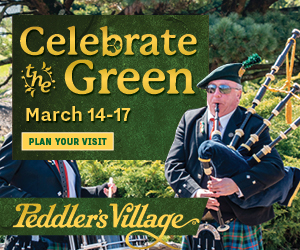Most of us identify as a part of the LGBT community. In more recent years, a “Q” has been tacked on to the end of that. For those who are really progressive, our community is summed up by the letters “LGBTQIA”: lesbian, gay, bisexual, trans*, queer/questioning and intersex, with the “A” commonly thought to represent our straight allies, but also being representative of asexuals, aromantics and those who identify as agender. Is this suddenly sounding complicated?
The thing is, individuals identifying as asexual, aromantic and/or agender generally feel entirely alienated from our community and invalidated generally. For me, I can’t help but be of the belief that as a long-marginalized community, we should be accepting of all sexual and gender minorities. So in that spirit, it feels important to acknowledge that approximately 1 percent of the population identifies as asexual (within this percentage, some identify as aromantic and/or agender; these statistics are unclear at present).
Asexuality is defined as a complete lack of sexual attraction to others, as well as a lack of interest in engaging in sex. Asexuality differs from celibacy in that celibacy is a choice to abstain from sex while asexuality is an orientation. It relates to how one feels, not how one behaves. For example, a gay man who is closeted and married to a woman (and therefore engages in heterosexual sex) isn’t any less gay because of his closeted state and all that accompanies it. Similarly, an asexual person may engage in sex due to their desire to abide by social norms but feel no internal drive to have sexual contact and experience no pleasure in doing so.
There is some variation within the asexual population. Some asexuals also consider themselves aromantic, which means that, in addition to a lack of sex drive, they desire no romantic intimacy of any kind. Alternately, other individuals who identify as asexual may be inclined to romantic interactions, simply without the sexual component. There are also those who identify as both asexual and agender, which is a lack of identification with gender binaries (i.e., male or female). Many agendered individuals wish to be referred to with gender-neutral pronouns such as “they” or “them,” despite their biological gender assignment. Is the “A” becoming clearer now?
For many people, the idea of the complete absence of sex drive is initially perplexing and may stimulate a series of questions with the first one being, “Why?” Scientifically speaking, it isn’t known why; however, it also isn’t explicitly known why people are oriented to be lesbian, gay, bisexual and trans* — another way that asexuality is in alignment with the LGBTQ population. Also similar is the psychological community’s inclination to view asexuality as a mental-health disorder. Homosexuality wasn’t fully removed from the Diagnostic and Statistical Manual of Mental Disorders (DSM), the psychological bible, as a diagnosable disorder until the 1980s, a change that did not occur without a fight similar to the one the asexual population is engaged in presently. While asexuality is not considered an official diagnosis in the DSM, many asexuals are labeled as having a hypoactive sexual-desire disorder or, more recently, male hypoactive sexual-desire disorder or female sexual interest/arousal disorder.
Such diagnoses often result in unpleasant and unwarranted interventions, such as extensive psychological testing, aggressive therapy with the objective of finding the root of their lack of sexual desire (it’s assumed that there is a root) and even testosterone for use in women in an effort to boost libido. Many of these interventions are reminiscent of conversion therapy sometimes used to “cure” homosexuality, a practice many politicians, including our own state Rep. Brian Sims, have been working so diligently to ban in recent years.
So, while asexuality may not seem like an experience aligned with the LGBTQ experience at first glance, upon taking a closer look, the similarities are plentiful. Currently, the most significant difference is the asexual population’s lack of community support. Individuals who identify as asexual, aromantic and agender are still in the very early stages of connecting with one another to work towards public acceptance, to gather important data and statistics and to develop a feeling of community. The Asexuality Visibility & Education Network (AVEN) is presently the primary organization working towards these goals with more than 30,000 members, and perhaps on an even larger scale, the LGBTQ community can work towards inclusivity of the asexual, aromantic and agender population.
